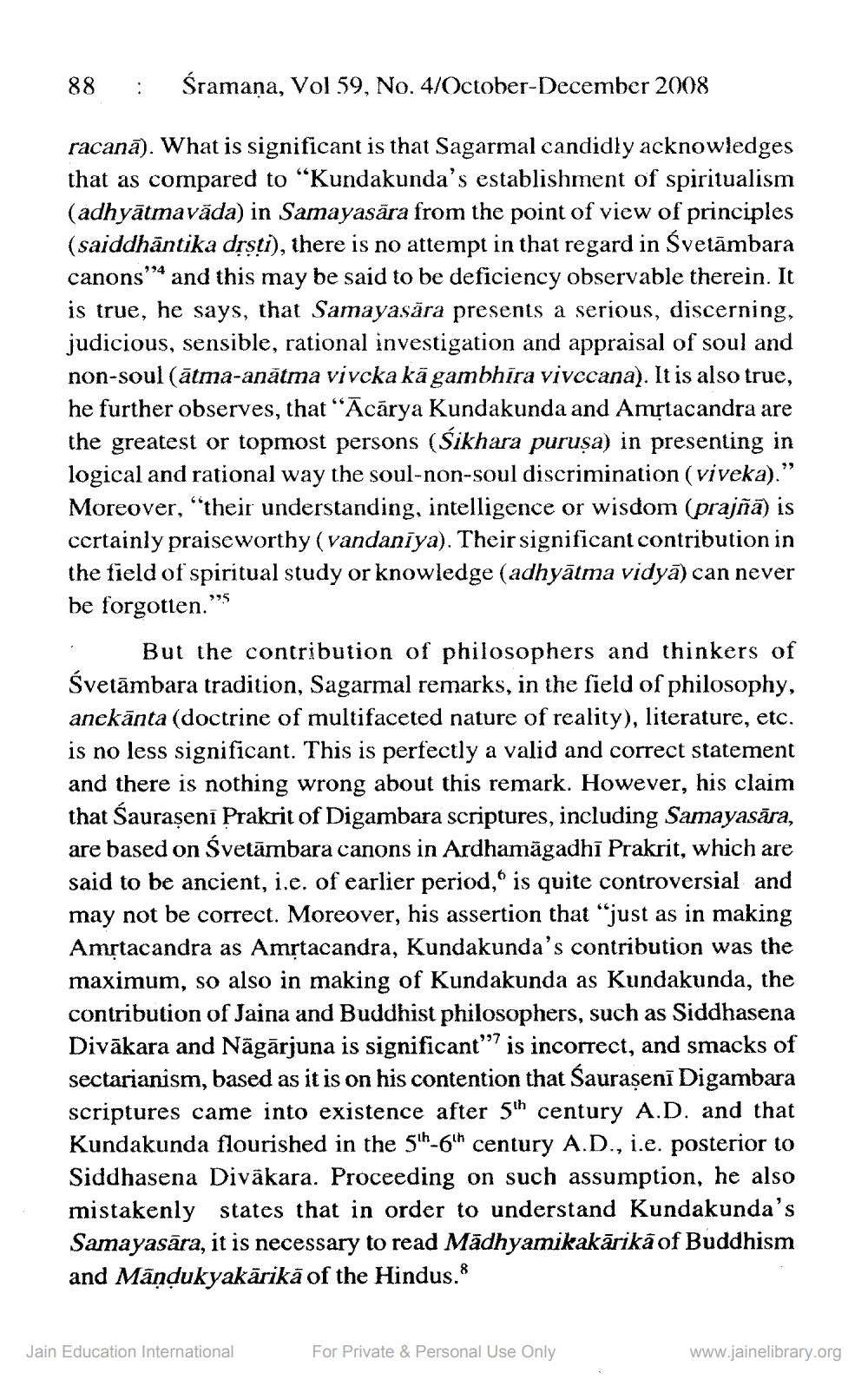________________
88
:
śramaņa, Vol 59, No. 4/October-December 2008
racanā). What is significant is that Sagarmal candidly acknowledges that as compared to "Kundakunda's establishment of spiritualism (adhyātmavāda) in Samayasära from the point of view of principles (saiddhāntika drsti), there is no attempt in that regard in Svetāmbara canons” and this may be said to be deficiency observable therein. It is true, he says, that Samayasăra presents a serious, discerning, judicious, sensible, rational investigation and appraisal of soul and non-soul (ātma-anătma vivcka kā gambhira vivccana). It is also true, he further observes, that “Ācārya Kundakunda and Amstacandra are the greatest or topmost persons (Śikhara puruṣa) in presenting in logical and rational way the soul-non-soul discrimination (viveka)." Moreover, their understanding, intelligence or wisdom (prajñā) is certainly praiseworthy (vandaniya). Their significant contribution in the field of spiritual study or knowledge (adhyātma vidyā) can never be forgotten.” . But the contribution of philosophers and thinkers of Śvetāmbara tradition, Sagarmal remarks, in the field of philosophy, anekānta (doctrine of multifaceted nature of reality), literature, etc. is no less significant. This is perfectly a valid and correct statement and there is nothing wrong about this remark. However, his claim that Saurașeni Prakrit of Digambara scriptures, including Samayasāra, are based on Śvetāmbara canons in Ardhamāgadhi Prakrit, which are said to be ancient, i.e. of earlier period," is quite controversial and may not be correct. Moreover, his assertion that just as in making Amrtacandra as Amrtacandra, Kundakunda's contribution was the maximum, so also in making of Kundakunda as Kundakunda, the contribution of Jaina and Buddhist philosophers, such as Siddhasena Divākara and Nāgārjuna is significant”? is incorrect, and smacks of sectarianism, based as it is on his contention that Saurasenī Digambara scriptures came into existence after 5th century A.D. and that Kundakunda flourished in the 5th-6th century A.D., i.e. posterior to Siddhasena Diväkara. Proceeding on such assumption, he also mistakenly states that in order to understand Kundakunda's Samayasāra, it is necessary to read Mādhyamikakārika of Buddhism and Mândukyakārikā of the Hindus.
Jain Education International
For Private & Personal Use Only
www.jainelibrary.org




